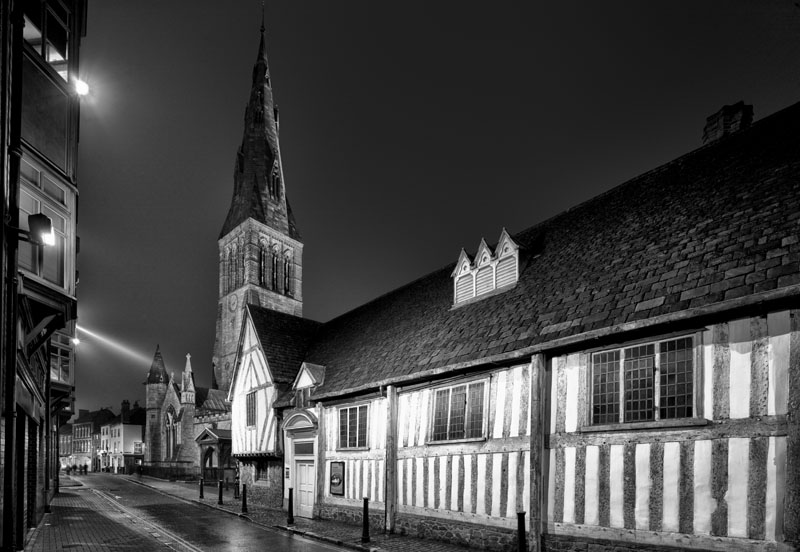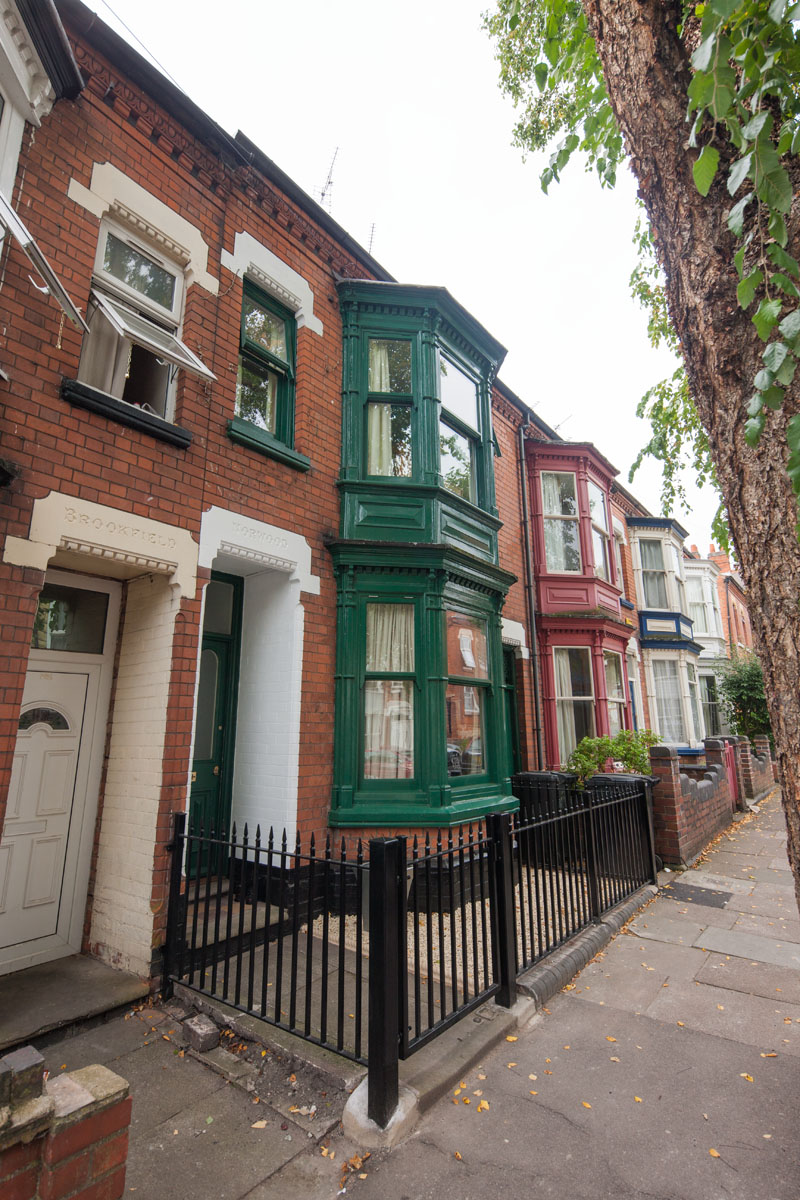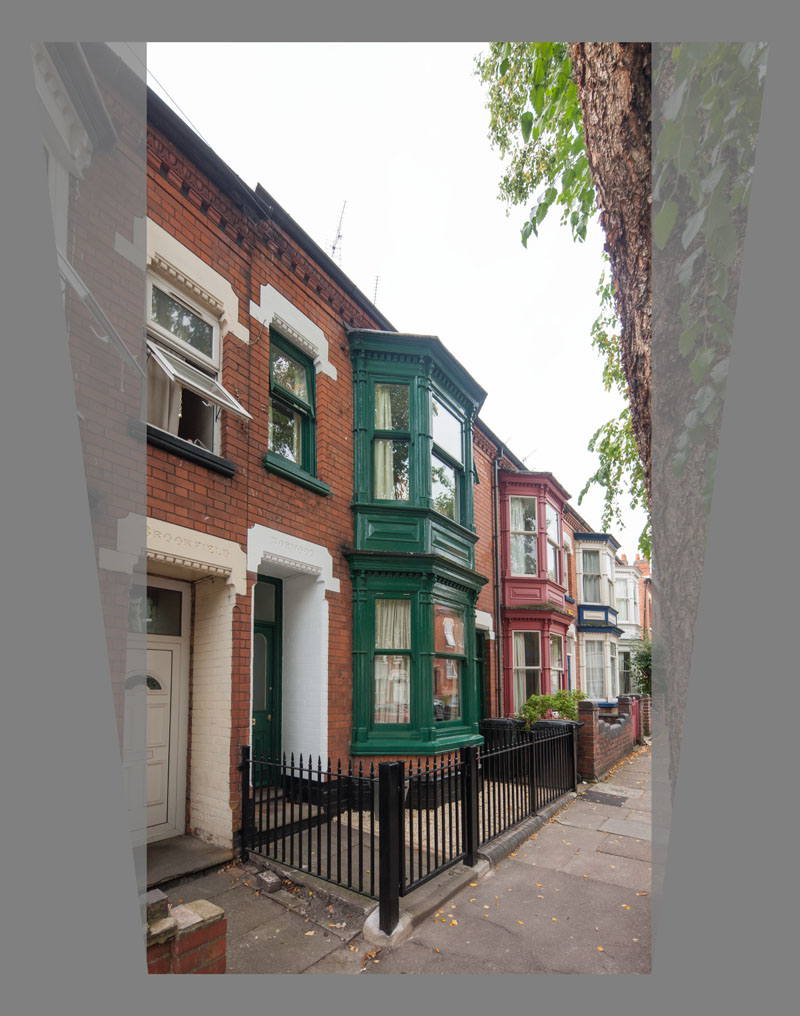The problem with fixing images in software
Using the right lens
Fixing images in software doesn’t always work

Why using the right lens makes all the difference
Shift lenses get the whole shot in
Looking upwards with the camera leads to vertical lines that lean inwards a bit – making buildings appear to lean backwards.
What about the much more obvious converging verticals you get, when trying to get a tall building (or a close one) into a very wide angle shot?
If I’d just pointed the camera upwards to get the whole of the spire in the shot above, then the timbers of the Guildhall (Leicester) would lean at an alarming angle (as with many buildings of this age, they may not be true, but that’s another issue).
Fix it later in software?
It’s easy to assume with all the image corrections you can now make in software, that such things are no longer a problem.
It’s simple enough to correct minor tilts and inaccuracies in software, but what about more obvious lean, of the image below? (assuming it’s not wanted for creative purposes).
I’m firmly of the belief that this problem is best addressed at the time of taking the photo, through the use of a specialist type of lens. I know that some would-be architectural photographers think that there is no need to go to the trouble and expense of using specialist lenses with movements (aka Tilt/Shift lenses), but IMHO they are wrong…
There definitely is a place for adjustments with software, since a fraction of a degree off with the vertical of a building may not be immediately visible in the viewfinder, but can be quite obvious in a 40″x60″ print.

The wide lens allows me to get all of the view in, but the extreme convergence of verticals is unwanted in most architectural work.
Note that the lines are straight, so a simple transformation to counteract the convergence is all it takes. If your lens isn’t of good quality, then the lines may also bow inwards, or outwards. This lens distortion needs fixing before any attempts to correct the verticals.
Correcting the vertical lines in Photoshop (using the Lens Correction filter) gives a trapezoidal image – not often wanted by clients, I’ve discovered.

The verticals are now OK, but the crop has left me with a rather tall and thin image.
Parts of the image have been lost – the most serious problem is that simply looking through the viewfinder it is extremely difficult to know what parts of your image will be lost.
By using a shift lens (the camera position is unchanged), I can get a corrected image, and know what’s in my frame.

Not only do I get predictability, the lack of stretching noticeably improves the image quality at the top of the frame. You might not notice this with images o the web, but with large prints it can be very obvious.
An example from Seattle, of shift lens use, where I’ve only really needed to crop the image a bit. This particular shot was taken hand-held. With lots of practice, shift lenses can easily become a solution for day-to-day use.

I’ve written up a wider discussion about lens choices in architectural photography
Lots more information and detailed examples: Tilt/shift lenses


